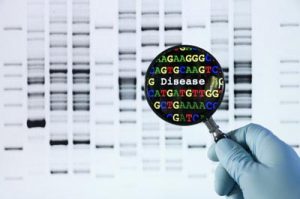 What is Cardiovascular Risk Panel ?
What is Cardiovascular Risk Panel ?
In Istanbul laboratories; Cardiovascular risk panel, which is frequently requested in couples with recurrent pregnancy loss, has been started to be applied. The test is also frequently used today to determine the susceptibility to cardiovascular diseases. Within the scope of the test, the following genetic regions are evaluated and 27 different mutations (genetic changes) occurring in 10 different genetic regions can be examined.
Factor V G1691A (Leiden) Mutation:
Activated protein C (APC) inactivates factor Va and factor VIIIa in the coagulation mechanism. In the presence of factor V mutation, this inhibition does not occur, so thrombin production and clot formation increase.
Heterozygous 1691GA:
It increases the risk of venous thrombosis 3-8 times, the risk of VTE during pregnancy 8 times, the risk of pregnancy loss, fetal growth retardation and preeclampsia 2-3 times, and placental ablation 5 times.
Homozygous 1691AA:
It increases the risk of venous thrombosis 9-80 times and the risk of pregnancy-induced VTE 20-40 times.
Prothrombin G20210A Mutation:
increases the plasma prothrombin level and causes a tendency for venous thrombosis.
Prothrombin mutation;
It increases the risk of fetal losses, placental ablation, severe preeclampsia and IUGR.
Heterozygous 20210GA:
It increases the relative risk of VTE 2-5 times, the risk of pregnancy-related VTE 15 times, the risk of recurrent first trimester fetal loss 3 times, the risk of non-recurring second trimester pregnancy loss 9 times, and the risk of fetal loss in all trimesters 2-3 times.
Homozygous 20210AA:
It increases the risk of VTE 10 times and increases the risk of pregnancy-related VTE by 26 times.
Factor V H1299R (FVR2) Mutation:
The H1299R mutation (especially the homozygous form) has been reported to cause APC resistance. APC resistance has been shown to be the most common cause of hereditary thrombosis in recurrent pregnancy loss. Heterozygous Factor V Leiden; While it increases the risk of VTE 7 times, the risk of VTE increases 3 times when it is seen together with the Factor V H1299R mutation. Heterozygous FVR2 variant has a critical role in recurrent pregnancy loss and it is recommended to be evaluated as a risk factor.
MTHFR C677T Mutation:
By reducing MTHFR enzyme activity, it causes hyperhomocysteinemia and homocysteinuria, which are considered to be important risk factors for cardiocerebrovascular diseases. An increase in homocysteine concentration can cause thromboembolism, atherosclerosis, coronary artery disease, preeclampsia, neural tube defects and stroke.
Homozygote 677TT:
It has been reported to increase the risk of thrombosis 2-3 times, and it has been reported to have an important role in recurrent pregnancy loss.
MTHFR A1298C Mutation:
It causes an increase in plasma homocysteine concentration. It has been shown that when heterozygous A1298C and heterozygous C677T coexist or in homozygous 677TT individuals, MTHFR activity decreases and homocysteine level increases.
APO-E Genotyping:
Apo E genotype has been shown to be associated with both lipid levels and CVD.
ApoE ε2/ε2:
It has been reported that it increases the risk of vascular disease and is a potential risk factor for RPL.
ApoE ε3/ε3:
It is a protective factor for recurrent pregnancy loss.
ApoE ε4/ε4:
It has been shown to increase the risk of death by 40% in CVDs and has been found to be associated with RPL.
ApoB R3500Q (Apo B-100) Mutation:
Apo B mutation delays the binding of LDL to the receptor and decreases the removal of LDL from the environment. It increases susceptibility to atherosclerosis and CVDs.
PAI 4G/5G Mutation:
With the increase of PAI-1 concentration, fibrinolytic activity is impaired and susceptibility to thrombotic events increases.
PAI 4G/4G:
It increases the risk of thromboembolism, fetal loss, IUGR, preeclampsia and MI.
PAI 4G/5G:
It has been reported that it increases the risk of thrombosis and causes early pregnancy loss, especially in cases where it is seen together with prothrombin gene mutation.
ACE Insertion/Deletion Genotyping:
the ACE gene; It encodes the ACE enzyme, which plays an important role in blood pressure regulation and electrolyte balance by converting angiotensin I to angiotensin II.
ACE I/D:
The enzyme level is intermediate, it increases the risk of thrombotic events 5 times and is a risk factor for recurrent pregnancy loss.
ACE D/D:
It increases the risk of thrombotic events 11 times, increases the risk of preeclampsia and hypertension in pregnancy.
GPIIIa L33P (HPA-1) Mutation:
It plays a role in platelet aggregation.
Homozygous A2(b) allele;
It is known to play a role in susceptibility to thrombosis, acute coronary events, MI and stroke at an early age, and it is associated with advanced IUGR.
Beta Fibrinogen -455 G>A Mutation:
It causes an increase in fibrinogen levels and is associated with arterial diseases such as myocardial infarction and stroke.
Homozygous 455 A>A:
An increased risk of pregnancy loss has been observed.
Factor XIII V34L Mutation:
Factor XIII forms crosslinks between fibrin monomers and makes the clot more resistant to fibrinolysis. G-T change in the gene encoding FXIIIa is the most common mutation. This mutation prevents the activation of FXIII by affecting the region where thrombin has proteolytic activity on FXIII. It has protective properties against myocardial infarction, deep vein thrombosis and pulmonary embolism.
 What is Cardiovascular Risk Panel ?
What is Cardiovascular Risk Panel ?